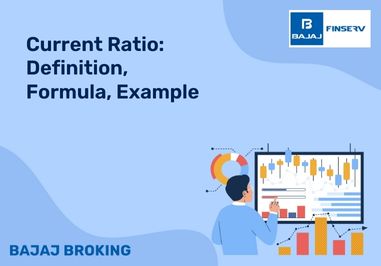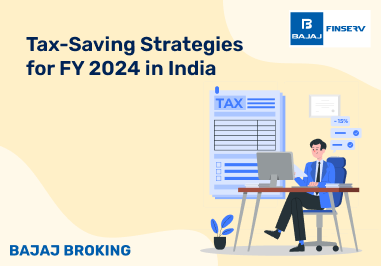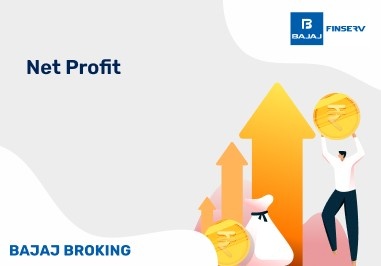BAJAJ BROKING
Divine Hira Jewellers IPO is Open!
Open a Free Demat Account
Trade Now, Pay Later with up to 4x
Track Market Movers Instantly
What is Difference Between Large Cap, Mid Cap & Small Cap
Entering the exciting world of the stock market opens doors to a multitude of investment opportunities. Among the various options available lie three distinct categories: large-cap, mid-cap, and small-cap stocks. These categories are more than mere labels. Let’s embark on a journey through the captivating world of stocks and understand the differences between large cap, mid cap, and small cap companies and their stocks. But, before that, it is important to understand the meaning of market capitalisation. It refers to the total value of a company’s outstanding shares of stock in the stock market.
So market capitalisation is often used as an indicator of a company’s size, and it can be used to categorise stocks into different groups such as large-cap, mid-cap, and small-cap based on their market value.
Large-Cap Stocks: The Cornerstones of Stability
Imagine large-cap stocks as the steadfast cornerstones of the stock market landscape. These are established companies, often referred to as blue-chip stocks, with a history of resilience and reliability. Just as sturdy oak trees can withstand all types of seasons, large-cap stocks have demonstrated their ability to stay firm amidst market fluctuations. With their substantial market capitalisation, indicative of their total market value, large caps possess a certain solidity that appeals to investors seeking stability. In India, an organisation needs to have a market cap of ₹20K Crores and above to qualify as a large-cap company.
Mid-Cap Stocks: The Rising Stars of Opportunity
Mid-cap stocks represent the rising stars of the stock market. These companies have moved beyond their infancy but are still in the process of expanding their presence. If large-cap stocks are the seasoned veterans, mid caps are the ambitious contenders. They offer a promising blend of growth potential and manageable risk, making them an attractive choice for those seeking a balanced investment approach. Companies with a market cap between ₹5K Crores – ₹20K Crores qualify as mid-cap stocks.
Additional Read: How Much Can You Earn From Stock Market
Small-Cap Stocks: The Seeds of Potential
Small-cap stocks embody the spirit of innovation and untapped potential. Much like young saplings reaching for the sun, these companies are in their early stages of growth. Investing in small caps is a venture into the realm of potential, where the promise of substantial returns mingles with the thrill of uncertainty. While small caps carry higher risk, they can offer rewarding returns to those who navigate their growth trajectory with insight. Small-cap stocks represent companies with a market cap of less than ₹5K Crores. The smaller of these, i.e. stocks of companies with an m-cap of ₹100 Crores – ₹500 Crores are known as micro cap stocks.
Differentiating Factors: Large Cap vs. Mid Cap vs. Small Cap
- Market Capitalisation: The distinguishing factor among these categories lies in their market capitalization. Large caps boast the highest, mid caps fall in the middle, and small caps have the lowest market capitalization. This marker reflects the relative size of companies within each category.
- Risk and Return: Large caps offer stability but might have slower growth, mid caps strike a balance between risk and growth potential, and small caps carry higher risk but the allure of substantial returns.
- Investor Profile: Large-cap stocks tend to attract more risk-averse investors seeking stability. Mid-cap and small-cap stocks attract those who are comfortable with a degree of risk and are open to the potential for higher returns.
- Market Presence: Large caps are established players, mid caps are on their way up, and small caps are often emerging entities with unique propositions.
- Sector Representation: Different sectors dominate each category. Large caps are often found in mature industries, mid caps span various sectors, and small caps are frequently in emerging or specialised sectors.
Additional Read: bracket order in the stock market
Finding the Right Fit
Investing in the stock market is not a one-size-fits-all endeavour. Each category of stocks – large-cap, mid-cap, and small-cap – appeals to different types of investors based on their risk appetite, investment goals, and financial circumstances. Let’s explore how each category aligns with various investor profiles:
- Large-Cap Stocks
Suited for: Conservative investors, those near retirement, and risk-averse individuals.
Why: Large-cap stocks offer stability, consistent dividends, and lower volatility. They are ideal for investors seeking reliable returns and protection against market fluctuations. If you prioritise capital preservation and are comfortable with potentially slower growth in exchange for reduced risk, large caps could be your go-to choice.
- Mid-Cap Stocks
Suited for: Investors willing to take a moderate level of risk for potential growth, individuals with a longer investment horizon.
Why: Mid-cap stocks strike a balance between stability and growth. They can offer substantial returns as companies expand their market presence. If you’re open to a moderate level of risk in exchange for the potential of higher returns and are patient enough to wait for your investments to materialise, mid caps could be a fit.
- Small-Cap Stocks
Suited for: Aggressive investors comfortable with higher risk, those seeking capital appreciation, and individuals with a longer investment horizon.
Why: Small-cap stocks are all about embracing growth potential. While they come with higher volatility, they can deliver significant returns for those who have the stomach for market fluctuations. If you’re willing to take on a higher level of risk in pursuit of substantial capital appreciation and are prepared for short-term ups and downs, small caps might be the path for you.
Additional Read: What are Authorised Stocks?
Balancing Act: Optimising Your Portfolio
Investing across these categories offers a balanced approach to harnessing the potential of the stock market while managing risk. Here are strategies to consider:
- Diversification: Distribute investments across large, mid, and small caps to create a diversified portfolio that balances stability and growth potential.
- Risk Appetite: Evaluate your comfort level with risk. Allocate a portion of your portfolio to each category based on your risk tolerance and investment goals.
- Thorough Research: Conduct thorough research before investing in any category. Understand the financial health, growth prospects, and competitive landscape of companies within each segment.
Additional Read: Be Aware of Buy and Hold strategy in the Stock Market
Balancing Act: Optimising Your Portfolio
In the dynamic landscape of the stock market, a nuanced understanding of large-cap, mid-cap, and small-cap stocks equips you with the compass to navigate its diverse terrain. By comprehending the attributes and implications of each category, you empower yourself to make informed investment decisions aligned with your financial aspirations. As you tread this path, remember that each category offers a unique blend of stability and potential, and your investment strategy is a canvas waiting to be painted with the colours of insight and knowledge.
For your convenience and easy reference, here is a concise overview of the key differences between large cap, mid cap, and small cap stocks.
| Aspect | Large-Cap Stocks | Mid-Cap Stocks | Small-Cap Stocks |
| Market Capitalisation | High | Moderate | Low |
| Risk and Return | Stable, Lower Growth | Balanced Risk and Growth | Higher Risk, Higher Growth Potential |
| Investor Profile | Risk-Averse, Seeking Stability | Moderate Risk Tolerance | Comfortable with Risk and Potential |
| Market Presence | Established, Industry Leaders | Growing, Promising Contenders | Emerging, Innovative Entities |
| Sector Representation | Often in Mature Industries | Diverse Sectors | Emerging or Specialised Sectors |
Share this article:
Read More Blogs
Our Secure Trading Platforms
Level up your stock market experience: Download the Bajaj Broking App for effortless investing and trading












